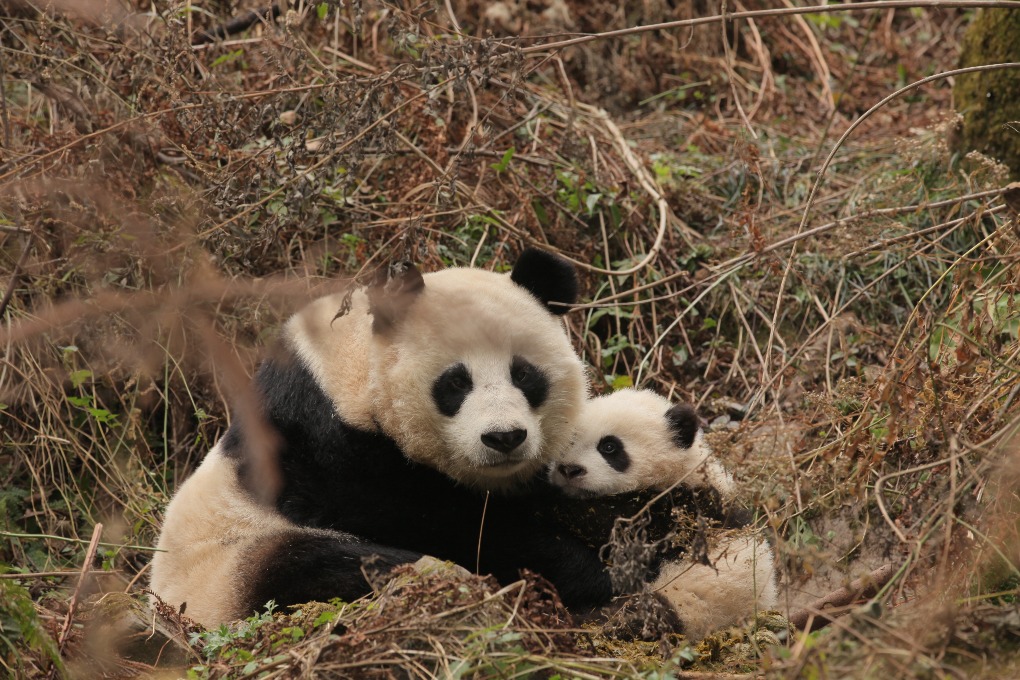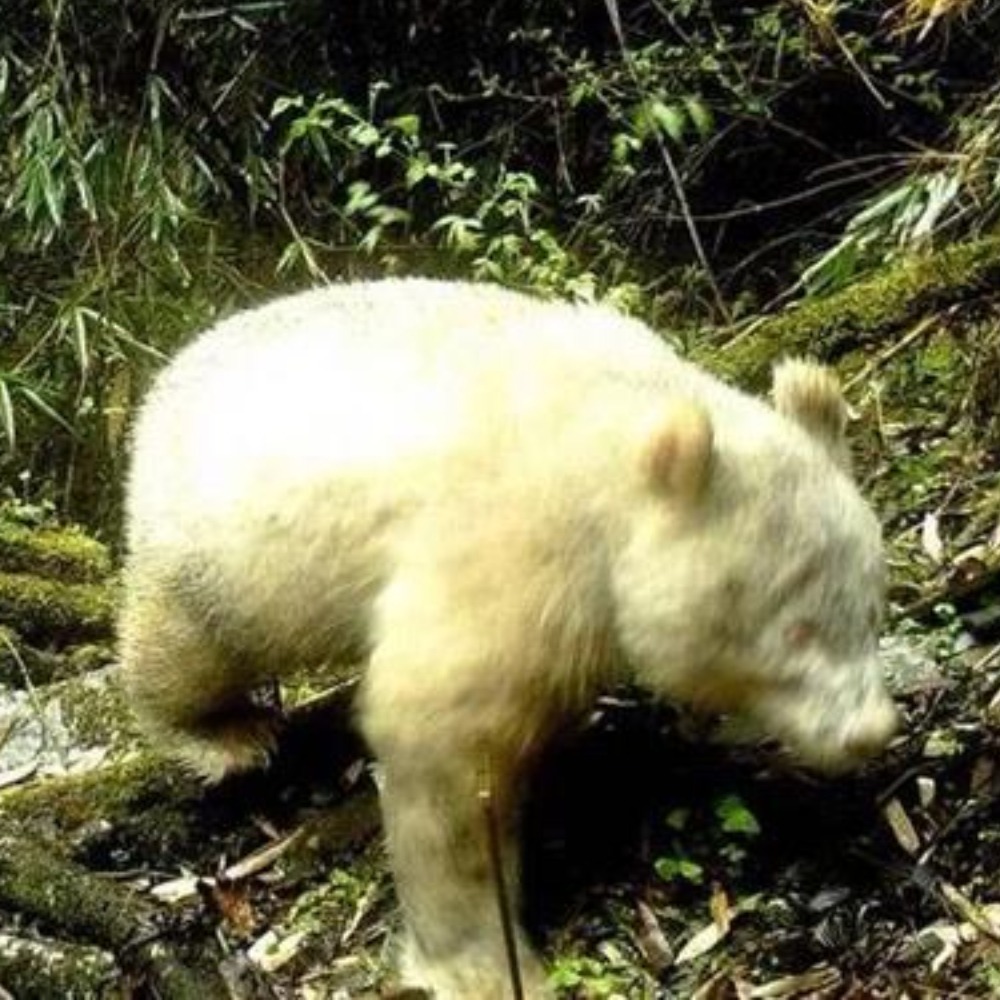Published : 2024-10-10
This exclusively Chinese "Black and White Bear" is loved by people all around the world, and the World Wide Fund for Nature (WWF) has even chosen it as the organisation's emblem.
This adorable "national treasure" has lived in China for more than 8 million years and nearly faced extinction in recent history.
After many years of conservation, the global population of wild giant panda has increased to more than 1,800, and the number of captive pandas has also exceeded 720.
From predaceous beast in ancient times to endangered animal in China
The giant panda family is not only a "national treasure", but also a "living fossil."
It lived in China's Yunnan province 8 million years ago and reached its peak a few hundred thousand years ago when their habitats covered most parts of eastern and southern China.

In ancient times, the giant panda was considered a predatory beast. The "貔" in the "Classic of Mountains and Seas"(《山海經》), a Chinese classic text and a compilation of mythic geography and beasts, the "白羆" in the "Book of Songs"(《詩經》), and the "貘" in "Compendium of Materia Medica"(《本草綱目》) were all ancient Chinese names for giant panda.
In the spring of 1869, French missionary Armand David caught a "Black and White Bear" in Sichuan, introducing this adorable Chinese creature to the Western world for the first time.
Because its skeleton and teeth are similar to that of a red panda, this species was named "giant panda."

Due to human activities, habitat destruction, and low reproduction rates, the living range of giant pandas had been reduced to Sichuan, Shaanxi, Gansu, etc., making it one of the top 10 endangered animals in China.
In 1962, China listed giant panda as a "precious and rare" protected species. In the next year, China established the Wolong Nature Reserve (臥龍自然保護區) in Wenchuan County, Sichuan.
That same year, the first field survey of giant pandas was launched, marking the beginning of the conservation and research of pandas.

Tian Zhixiang, who was working at the Wenchuan County Forestry Bureau at the time, was one of the first employees of the Wolong Reserve.
In 1973, when the local Forest Industry Bureau planned to deforest the reserve, Tian Zhixiang was ordered to write a letter to the central government suggesting that deforestation would threaten the survival of the giant pandas.
After investigation, it was found that traces of panda activities were present throughout an area of several hundred kilometres.
In 1975, the Forest Industry Bureau withdrew from the reserve, and the State Council expanded the area of the Wolong Nature Reserve from 200 square kilometres to 2,000 square kilometres, which remains China's largest panda reserve today.
Read more: Chengdu Giant Panda Museum
Giant panda chosen as the emblem of WWF
Around 1978, the Chinese government established three fixed observation stations in Sichuan and Gansu to observe the ecology of wild pandas.
Now, only one station is still in use—the "May 1st Shed" located in the southeast core area of the Wolong Nature Reserve, named after the 51 steps that need to be climbed to reach the nearest water source.
In the 1960s, WWF chose giant panda as the organisation's emblem; 20 years later, WWF entered Wolong and began cooperation with the Chinese government, becoming the first international organisation to carry out conservation work in China.

In the 1970s to 1980s, a large area of arrow bamboo died off within the habitat of Sichuan's giant pandas, and the bodies of more than 200 pandas were discovered in the wild.
Chinese musicians created a song for this event titled "Panda Mimi." The lyrics go: "The Bamboo flowers are blooming, Mimi is lying in her mother's arms counting the stars. The stars are so beautiful, but where is tomorrow's breakfast..."
Although some panda experts later pointed out that there was no evidence to show that these pandas died from lack of bamboo or starvation, this phenomenon did ignite a global frenzy of "Save the Panda" at the time.
By 1986, Sichuan had rescued nearly 60 sick and starving pandas, some of which were sent to Chengdu for foster care. To care for the national treasure, China established the Chengdu Giant Panda Breeding Research Base in the northern suburbs of Sichuan in 1987.
After several expansions, it now covers an area of about 1 square kilometre with the largest group of captive giant panda in the world, housing about 200 pandas.

After decades of conservation, China has now established 67 related nature reserves, including nearly 70% of the wild giant panda population within its scope, also providing protection for other endangered animals and plants in the region.
The global wild panda population has risen from 1,114 in the 1980s to nearly 1,900 in 2024, and the number of pandas bred in captivity in China has increased to 728.
The International Union for Conservation of Nature (IUCN) Red List of Threatened Species downgraded the threat category of giant pandas from "Endangered (EN)" to "Vulnerable (VU)" in 2016.
However, the State Forestry Administration pointed out that the giant panda is still a type of endangered animal in China. Habitat fragmentation and global climate change continue to threaten the survival of giant pandas; the conservation work still has a long way to go.
Read more: Panda diplomacy: A witness to the thaw in China-U.S. relations









